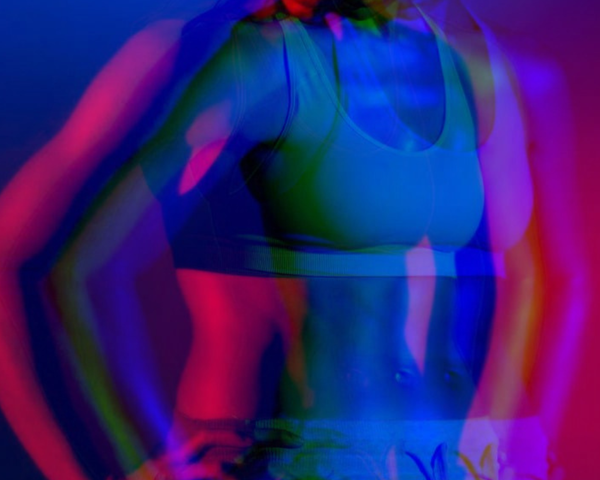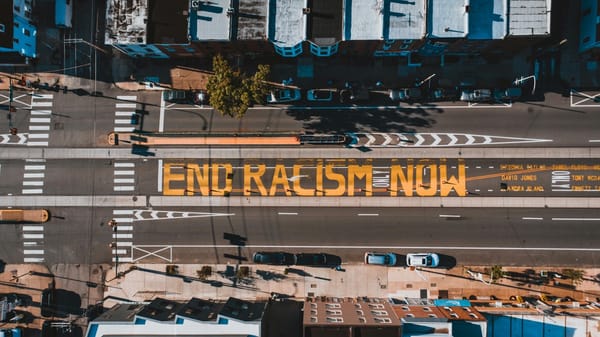We Are the Invisibly Disabled: We Don’t Have a Box
Just because we look fine doesn't mean we are.

BY LAVONNE ROBERTS
Access the Audio Read version of this article directly on Spotify for Podcasters.
"Creating space for conversations about invisible disabilities in a world that often condescends to the disabled is necessary."
I'm one of the one billion people worldwide who live with some kind of disability, and the number is growing. Seventy-five percent of these people don't use a wheelchair or obvious aid. We are the invisibly disabled. I have Complex Post Traumatic Syndrome Disorder (cPTSD), a subset of PTSD. While PTSD is a fear-based disorder, my diagnosis is often referred to as a shame-based disorder originating from a history of chronic exposure to traumatic events.
As a child abuse survivor, I struggle with depression and anxiety, which are hallmark symptoms. Unsurprisingly, trauma is a major contributing factor in mental illnesses and addictions. The World Health Organization (WHO) reports that one in four people worldwide will be affected by mental or neurological disorders at some point in their lives. Around 450 million people currently suffer from such conditions, placing mental disorders among the leading causes of ill-health and disability worldwide.
When I was younger, I went to great lengths to hide my mental health challenges; I told anyone who asked that my mother was dead. The truth is, I neither wanted to explain why I stepped away from an abusive relationship, nor be judged as broken.
After years of therapy, determined to live authentically — warts and all — I opened up about my Dickensian childhood when appropriate. Then a car accident almost broke my back. One wintery evening in 2018, a truck rear-ended me while I was driving on a small country freeway. The impact was so hard, it shattered the car's glass and broke the axle. Diagnosed with herniated and bulging discs, I became a person with multiple disabilities.
While I can often pass as "normal," there are times when my crippling back spasms, and I can barely walk. Since my accident, I've fought not to be angry or afraid. Knowing I'm not alone helps. Adults who are young or who look healthy are often accused of faking their condition or draining the system. Many must fight to have their health challenges acknowledged.
A friend told me she was harassed after arriving at the airline gate in a wheelchair. "That's not fair. She's queue-jumping," a woman yelled after she walked aboard the plane. My friend has Ehlers-Danlos syndrome, a connective tissue disorder that can cause joint dislocation.
Another friend with fibromyalgia said, "People with my condition need to move to feel better, but if we move too much, we are in extreme pain, sometimes for days. It makes working incredibly difficult, and working out feels almost impossible." Yet, a different friend with chronic fatigue syndrome (CFS) said, "People tend to forget about things when they cannot see them or don't get consistent reminders of something invisible existing." When she tries to bow out of plans due to a bad pain day, she says, "my friends roll their eyes and offer Adderall or alcohol to "make me fun." Society's understanding of CFS is still sorely lacking. It is a complex and extremely debilitating illness that leaves many patients with a lower quality of life than those living with depression, cancer, and other debilitating diseases. Still, no cure exists.
A common thread to these stories is: not being listened to by doctors, unsupportive employers, being misunderstood by close friends and family, periods of depression, and anxiety from feeling helpless.
Given that our current system distrusts people applying for disability, people with non-visible disabilities are often penalised. Black women, in particular, are subjected to further discrimination as studies demonstrate that doctors continue to believe that Black people have a higher pain tolerance or feign disability.
One of the challenges many like me face is that there is no middle ground for people with fluctuating disabilities.
"It's the invisible nature of an illness that people don't understand," Wayne Connell says. He founded the Invisible Disabilities® Association (IDA) in 1996 after his wife was diagnosed with primary progressive multiple sclerosis and late-stage chronic Lyme disease. He was frustrated by the perception that she didn't have a real disability. "Often, the most difficult part of living with a debilitating illness or injury is the lack of understanding the person encounters,” he said. “Since many living with a chronic condition don't always look sick, we find ourselves struggling to believe their limitations are real. Our primary demographic at IDA — chronically ill women between the ages of 35 and 55 — feel like orphans. Disregarded, isolated, and often abandoned by their partners, families, friends, and society at large — most are all alone."
There is a stigma around patients whose impairments aren't visible, further compounded when coupled with biases that exist along with ethnicity, gender, and social class. Women live longer than men: on average three-and-a-half years in Europe. In the UK, men can expect to live 79.3 years and women 82.9 years. In the US, 30 years of health data show that, while women live longer than men on average, those years are more likely to be spent in ill health and with disabilities. The inclination to dismiss women's pain as psychosomatic continues throughout life.
Carol Sveilich, author of JUST FINE: Unmasking Concealed Chronic Illness and Pain and But You LOOK Just Fine, said, “People with physical conditions and challenges that don’t manifest in their appearance or demeanour are dealing with two significant issues: the physical symptoms of the illness itself, and the emotional impact of looking like they should be ‘“okay’”, but feeling far from it.” Numerous studies show that adults living with a concealed stigmatised identity are at risk for low self-esteem. People who feel “lesser than” build identities around other people’s perceptions.
Ms. Sveilich said when she was first diagnosed with Crohn’s disease, a chronic autoimmune disorder, her physician pulled her aside and whispered, “Don’t tell anyone you have this illness. You’ll never get insurance. You’ll never hold onto your job.” She was startled, but in 1989, that was the reality of the situation. The doctor didn’t even write the name of her disease in her medical chart for fear she would lose her insurance coverage. She heeded his advice and hid her illness. However, when she interviewed over 150 people for the JUST FINE book, she realized this was a common practice.
As medical advances help us live longer, chances are you may become disabled through an injury or an illness. The pandemic may add to the legions of the disabled. As we're discovering, many who have recovered from COVID-19 will continue to face significant non-visible health issues for the rest of their lives. Thus, we all have a stake in protecting the civil rights of people with disabilities.
Our "tough it out" culture has become a kind of collective insanity. We live in a competitive world where we're expected to keep up or sit out on life's experiences. In my case, I realised people treated me differently when I walked with a cane versus on a good day. when everything seemed fine.
Creating space for conversations about invisible disabilities in a world that often condescends to the disabled is necessary. By building human connections in communities supporting our illnesses, we can better self-advocate and dismantle shame and stigma. Inclusion leads to representation, which in turn drives change.
Connecting with others suffering from similar conditions allows us to feel less alone and know that our conditions are valid. Beneath our not always visible suffering and scientific classifications, are people like you and me trying to live meaningful lives. Ideally, the capacity for empathy and shared growth feels attainable when we share our stories. As long as the burden of being judged as “lesser than” persists, the solution is community.





